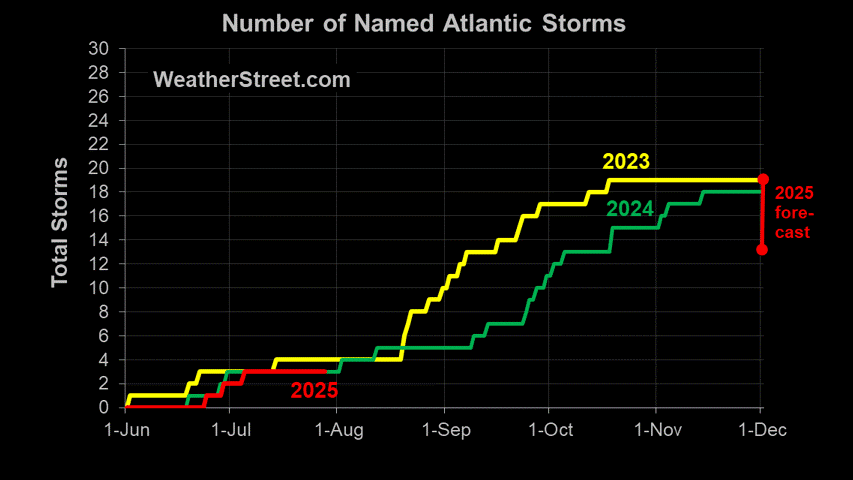Hurricane Sandy looking at the Jersey Shore for Monday
Storm track projections have Hurricane Sandy being pulled in somewhere between Virginia and South Jersey. Currently Sandy is a Category 1 hurricane with 80 MPH sustained winds. The forecast calls for the intensity of this storm to stay at a Cat 1 level but the concerns are that the approaching Jet Stream that pulls Sandy in towards the coast will cause much higher gusts.
Historic Sandy Targets New York, New Jersey, Delmarva (AccuWeather)
This storm's track is quite unusual, expecially for this time of the year. Typically a tropical system will curve out to sea. In this case though, there is a blocking high in the north Atlantic and the jet stream will act as a conveyor pulling Sandy back to shore.
Historic Sandy Targets New York, New Jersey, Delmarva (AccuWeather)
Damaging wind gusts will reach from Boston to Washington, D.C., and inland to the central Appalachians. Sandy will not be your typical hurricane when it moves in from the southeast. Hurricanes are small and compact.AccuWeather has projected an unusually high storm surge due to the approaching storm combined with the full moon.
Sandy will be more like a large nor'easter on steroids. It could have the strength of a Category 1 or 2 hurricane. Tropical storm and hurricane-force wind gusts will extend out hundreds of miles from the center, so focusing on the center alone in terms of the severity for wind and rain is not recommended.
There is the potential for tens of thousands of trees to be downed and millions of utility customers could be without power at some point. Flying debris, including airborne panes of glass in the larger cities will pose a danger. Some secondary roads could be blocked by trees. Depending on the landscape, such as heavily wooded areas, the power could be out for a week or more.
Sandy has the potential to bring historic storm surge flooding near and north of the center.Unusual Storm Track
It is possible areas from New York City and Long Island to New jersey, the Delmarva and into the Philadelphia areas have some of their worst coastal flooding on record, depending on exactly where the storm tracks.
Communities, neighborhoods, roads, rail yards, subway stations and other low-lying areas near the coast, generally north of the track can take on feet of salt water.
AccuWeather.com meteorologists are expecting a storm surge of 5 to 10 feet, but locally higher levels are possible near and just north of the storm track.
The full moon during the afternoon of Monday, Oct 29. will add to high tide levels spanning the 28th through the 30th.
Near-coast waves will average 10 to 15 feet, while seas well offshore will range from 30 to 40 feet.
This storm's track is quite unusual, expecially for this time of the year. Typically a tropical system will curve out to sea. In this case though, there is a blocking high in the north Atlantic and the jet stream will act as a conveyor pulling Sandy back to shore.
Graphic courtesy of The Weather Channel
Hurricane Sandy: Potential Serious U.S. Impacts (Weather Channel)Though we feel that it's likely Sandy will hit some portion of the Northeast or Mid-Atlantic coast, there remains uncertainty with the exact timing, location and magnitude of the worst impacts. The forecast involves a rare, complex atmospheric setup that will allow the system to pivot back to the northwest into the region rather than simply moving out to sea.
Where exactly this pivot back to the west or northwest occurs will dictate the timing and where the worst of Sandy ultimately hits. That said, Sandy will have a large wind field and therefore effects from the system will stretch across a wide area well away from Sandy's center. To reinforce, it is very important to not focus on the center of our projected path map since the impacts will extend well away from where Sandy's center eventually moves inland.
Significant impacts from Sandy could potentially begin as early as Sunday and continue into Monday and Tuesday.
What kind of impacts are we talking about?
Destructive winds, heavy rain, major coastal flooding and beach erosion would pummel portions of the Mid-Atlantic and Northeast regions between later Sunday and Tuesday of next week. Of course, the high winds would extend inland, with the potential for downed trees and powerlines. Widespread power outages could last for days.
(MORE: Latest "Sandy" Maps | Tropical Update)
This setup could even wrap in just enough cold air on its western edge to produce wet snow, possibly heavy, in some parts of the central Appalachians (mountains of West Virginia and Pennsylvania).
Residents from New England to New York, Pennsylvania, New Jersey, Delaware, Maryland and Virginia should remain vigilant and begin to prepare for Sandy's impact.










